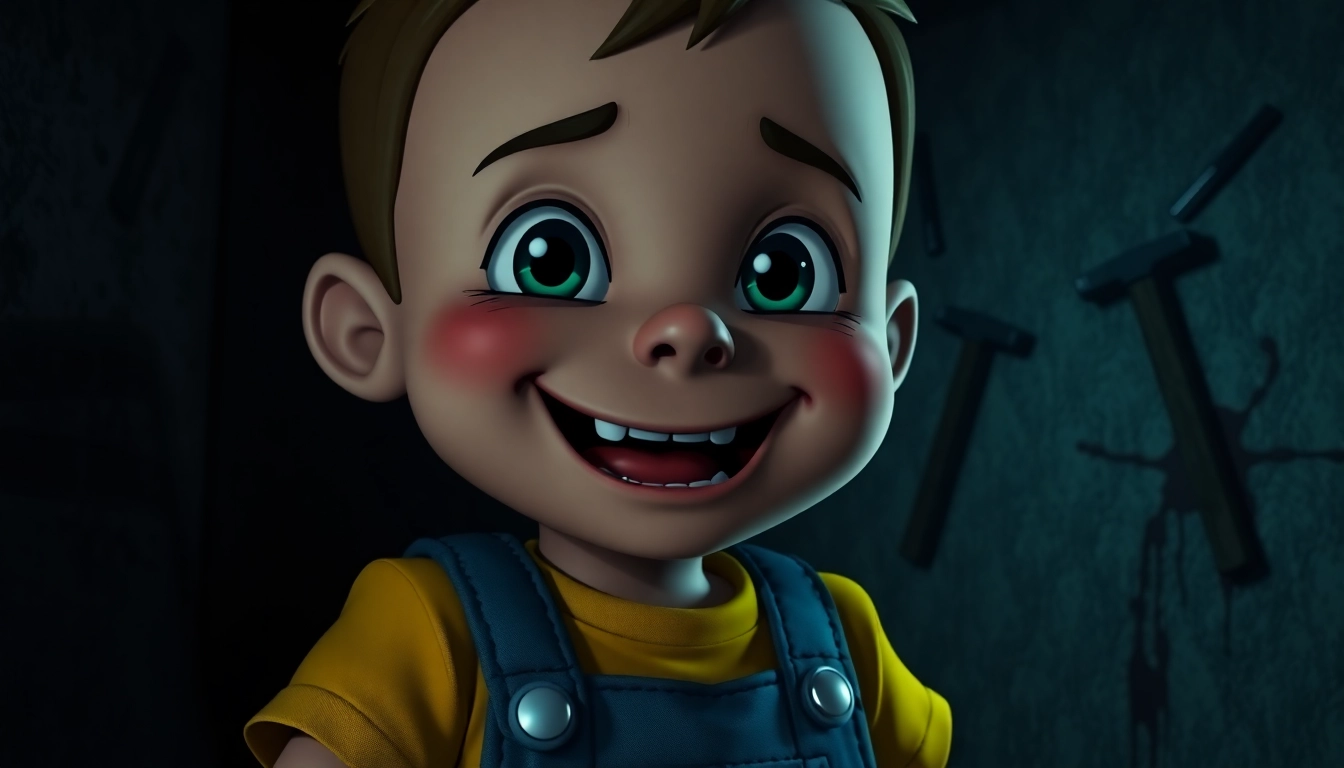Overview and Context: Bloodmoney – A Psychological Horror Clicker Experience
Bloodmoney is a visceral, unsettling psychological horror clicker game that plunges players into a dark moral landscape. Set against a backdrop of desperation and moral compromise, the game challenges players to navigate a disturbing dilemma: how far are you willing to go to survive? The core mechanic revolves around clicking on a cheerful character named Harvey, whose innocence sharply contrasts with the increasingly violent and morally questionable tools available for purchase as the game progresses. This tension between profit and morality creates a deeply immersive experience that explores human nature, ethical boundaries, and the psychological toll of survival. For those interested in exploring this haunting journey, you can learn more about the game at its official site: bloodmoney.
The Dark Narrative of Bloodmoney and Its Community Insights
At its core, Bloodmoney weaves a compelling narrative of desperation, morality, and human frailty. You play as an individual diagnosed with a severe health condition, desperately needing $25,000 for treatment. With time running out and limited options, a strange figure named Harvey offers an unusual solution: click on him to generate income. This seemingly simple premise quickly morphs into a profound exploration of moral boundaries, as each click harms Harvey more and more, with visual and psychological repercussions that escalate in intensity.
Community reactions to Bloodmoney reveal a fascinating mix of horror, introspection, and philosophical debate. Many players find themselves questioning their own morals as they decide whether to minimize Harvey’s suffering or maximize profit regardless of the human toll. The game’s subtle storytelling and visual cues—such as Harvey’s shifting expressions and the increasingly violent tools—spark discussions about human nature, empathy, and the corrupting influence of desperation. These insights are often shared in online forums and gameplay videos, which showcase the game’s layered storytelling and emotional impact.
Featured Gameplay Videos and How They Illustrate the Experience
Watching gameplay videos is a powerful way to grasp the full scope of Bloodmoney’s unsettling atmosphere. Content creators demonstrate various playthroughs, highlighting how choices influence outcomes and how the game’s mechanics subtly track player decisions. For example, some videos focus on achieving the Good Ending, where minimal harm is inflicted on Harvey, while others showcase the path to the Bad Ending, where players opt for maximum efficiency at Harvey’s expense. These videos also reveal how visual cues—such as Harvey’s facial expressions and body language—shift throughout gameplay, subtly emphasizing the moral stakes involved.
One notable video, available on YouTube, offers a detailed walkthrough and full explanation of all four endings, helping players understand the nuanced decisions that lead to each conclusion. These visual guides are invaluable for those seeking to explore the game’s hidden depths and moral complexities.
Clicking Mechanics and the Pathways of Profit
The core mechanic of Bloodmoney hinges on clicking Harvey to earn money. Each click increases your total funds, which are desperately needed to pay for your medical bills. However, this comes at a cost—Harvey suffers pain, and his visual appearance deteriorates with each interaction. As the game progresses, the shop offers increasingly disturbing tools, such as needles, scissors, and hammers, designed to maximize earnings but at escalating psychological and visual costs to Harvey.
This clicking mechanic is deceptively simple, but it embodies a complex moral dilemma: do you continue to click and gain more money, risking Harvey’s suffering and your moral integrity? Or do you slow down, risking not reaching your urgent financial goal? The tension between speed and morality is at the heart of gameplay, forcing players to confront their own ethics in a pressured environment.
Upgrade System: Enhancing Profit and Moral Consequences
The shop system introduces various upgrades that exponentially increase earnings per click. Early upgrades might include harmless tools like pillows or small needles, but as players progress, more violent options become available, such as hammers and knives. Each upgrade not only boosts profit but also amplifies Harvey’s pain, leading to increasingly disturbing visuals and dialogues.
These upgrades are not purely functional; they serve as moral markers. Choosing a less violent tool, like scissors, results in a more moderate moral impact, while opting for a hammer or knife signifies a willingness to accept greater suffering for higher gains. This mechanic creates a risk-reward dynamic that tests players’ moral boundaries and decision-making under pressure.
Multiple Pathways: Diverse Moral Outcomes
Bloodmoney features multiple pathways that lead to three distinct endings, each reflecting the player’s moral choices. These are:
- The Good Ending: Achieved by minimizing Harvey’s suffering, often through careful selection of upgrades and restraint in clicking. The player reaches the financial goal with the least harm, resulting in a more compassionate resolution.
- The Normal Ending: Balances profit with moderate violence. The player maximizes earnings but still causes noticeable suffering, leading to a more ambiguous conclusion.
- The Bad Ending: Focuses on efficiency at any cost, choosing the most violent tools available and pushing Harvey to the brink. This path results in Harvey’s extreme suffering and a dark, unsettling ending.
The game subtly tracks your choices and actions, influencing which ending you unlock. The decision to take the least harmful route or the most exploitative one is central to the game’s thematic exploration of morality and survival.
The Psychological Horror and Time Pressure
Bloodmoney excels at creating psychological tension. The ticking clock—aiming to reach $25,000 before your medical deadline—pressures players into making rapid decisions. This time constraint amplifies the moral stakes, pushing players to weigh the immediate need for profit against the long-term cost of Harvey’s suffering.
The game’s visual and auditory design enhances this tension. Harvey’s expressions become more distressed, and visuals grow darker and more disturbing as the game progresses. Dialogue hints and subtle cues guide players to consider the moral implications of their choices, fostering a sense of unease and introspection.
The Final Choice and Harvey’s Proposition
As players approach the financial target, Harvey’s character begins to show signs of desperation and fear. His cheerful demeanor fades, revealing a more vulnerable and tormented persona. The final choice hinges on whether you prioritize minimal harm or maximize profit at all costs.
Harvey himself may seem unaware of the full extent of the tools used, often surprised by the violence—especially when more brutal weapons like hammers or knives are purchased. This adds an extra layer of moral complexity: is Harvey truly aware of what’s happening, or is he unknowingly complicit? The ultimate decision determines the ending, reflecting the player’s moral stance and the depth of their ethical compromise.
About BLOODMONEY: Related Games and Broader Impact
Bloodmoney stands out as a unique psychological horror experience, but it also resonates with a broader genre of dark clicker and morality-based games. Its themes echo in titles that explore human nature, survival ethics, and the cost of greed. The game’s unsettling tone and moral dilemmas have sparked discussions in gaming communities, inspiring fan theories and creative interpretations of Harvey’s character and the story’s symbolism.
Fans and critics alike recognize Bloodmoney as a provocative meditation on the duality of human morality—how desperation can push individuals toward morally questionable choices, and what those choices reveal about our true nature.
Community Insights and Hidden Depths
Community forums and gameplay analyses have uncovered numerous hidden details that deepen the game’s narrative layers. For example, some players observe that Harvey’s reactions—such as surprise or fear—may suggest he does not fully understand the tools or the extent of his suffering, raising questions about consent and awareness. Others point out subtle visual cues that hint at a larger, perhaps supernatural or malevolent, force controlling the shop and its tools.
These insights contribute to a richer understanding of Bloodmoney’s themes, transforming it from a simple clicker game into a psychological exploration of innocence, exploitation, and moral decay.
The Broader Themes of Humanity and Morality
Bloodmoney’s narrative challenges players to reflect on fundamental questions: What is the cost of survival? How much moral compromise is acceptable in desperate circumstances? The game acts as a mirror, forcing players to confront their own thresholds for cruelty and empathy. It explores the inherent duality of human nature—the capacity for kindness and brutality coexisting within us—and examines how extreme situations can strip away societal norms to reveal our true selves.
Through its dark storytelling, Bloodmoney ultimately questions whether profit and survival are worth the moral costs we pay, and whether true morality is possible when faced with life-and-death decisions.
Conclusion: When Profit Meets Ethical Boundaries
Bloodmoney is more than just a dark clicker game; it’s a psychological odyssey that tests the limits of human morality. Every click, upgrade, and decision pushes players further into a moral abyss, revealing unsettling truths about human nature and the cost of survival. The game’s multiple endings serve as stark reminders that choices have consequences—some compassionate, others horrifying—and that the line between good and evil is often blurred in moments of desperation.
As you contemplate your journey through Bloodmoney, consider this: how far would you go for your own survival? Would you prioritize minimal harm, or would you exploit every opportunity at any human cost? These questions linger long after the screen goes dark, prompting reflection on the darker sides of our psyche and the choices we make when faced with impossible circumstances.
For those intrigued by the moral dilemmas and psychological horror of this haunting game, delve deeper into the experience at bloodmoney and explore the disturbing world of Harvey and his shop. Remember, in Bloodmoney, every click counts—and so does your conscience.
Connect With Us
Interested in more psychological horror experiences or want to share your own gameplay insights? Stay connected with us for updates, discussions, and community stories about the dark and compelling world of Bloodmoney. Join the conversation and explore the depths of human morality and survival in this haunting game.

